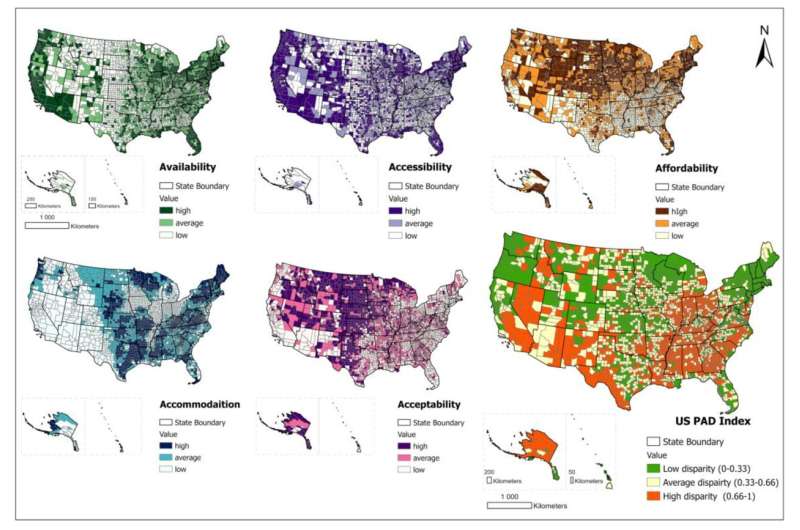This article has been reviewed according to Science X's editorial process and policies. Editors have highlighted the following attributes while ensuring the content's credibility:
fact-checked
trusted source
proofread
'Play deserts' common throughout Deep South, Southwest

You've heard of food deserts, areas where healthy and nutritious food is all but impossible to find. But now experts are concerned about another public health problem: play deserts.
Play deserts are areas where parks and other spots to run around and play are nonexistent, hard to access or in less safe locations that make parents second-guess taking their children to play there. And a new study from the University of Georgia found that hundreds of U.S. counties fit into that category.
About 10% of the country is designated a food desert. But the new research shows a similar percentage of the U.S. lacks playgrounds, parks and other areas for kids to run around.
Many of the counties lacking access to play areas were clustered in the Southeast and Southwest. Additionally, pockets of play deserts were most common in rural and suburban areas throughout the country. But in the South, even urban areas lacked adequate play space.
"Parents often consider a park the first place to go for their children to get some exercise and to play," said Jue Yang, lead author of the study and a doctoral geography student in UGA's Franklin College of Arts and Sciences.
"But even if you have the park near where you live, if the environment is not safe or it's very difficult to access, then people will not use it," said Lan Mu, corresponding author of the study and a professor of geography.
Having parks isn't enough. Playgrounds should be safe, accessible and affordable
Using five broad measures of access to play areas (accessibility, availability, accommodation, affordability and acceptability), the researchers used machine learning technologies to determine how the country fares on a county level.
The study found that the Southwest is lacking not only in access to play areas but also in play spaces that parents want to bring their kids to.
"In those areas, the quality of the park should be the priority for the policymaker to think about," Yang said. "In some areas, it's really hot, for instance, so community leaders need to make accommodations for that. They could build water features into the parks and create shaded areas where children can play but not be in direct sun."
In the Southeast, the biggest issues were affordability, accessibility and availability. That means building more parks and open spaces where parents can bring their children to play for free or reduced costs, the researchers said.
The researchers plan to make the interactive maps available online in the future to help local, county-level leaders determine how to create more play oases in their communities.
More information: Jue Yang et al, Measuring and Mapping Physical Activity Disparity (PAD) Index Based on Physical Activity Environment for Children, ISPRS International Journal of Geo-Information (2023). DOI: 10.3390/ijgi12030134
Provided by University of Georgia




















